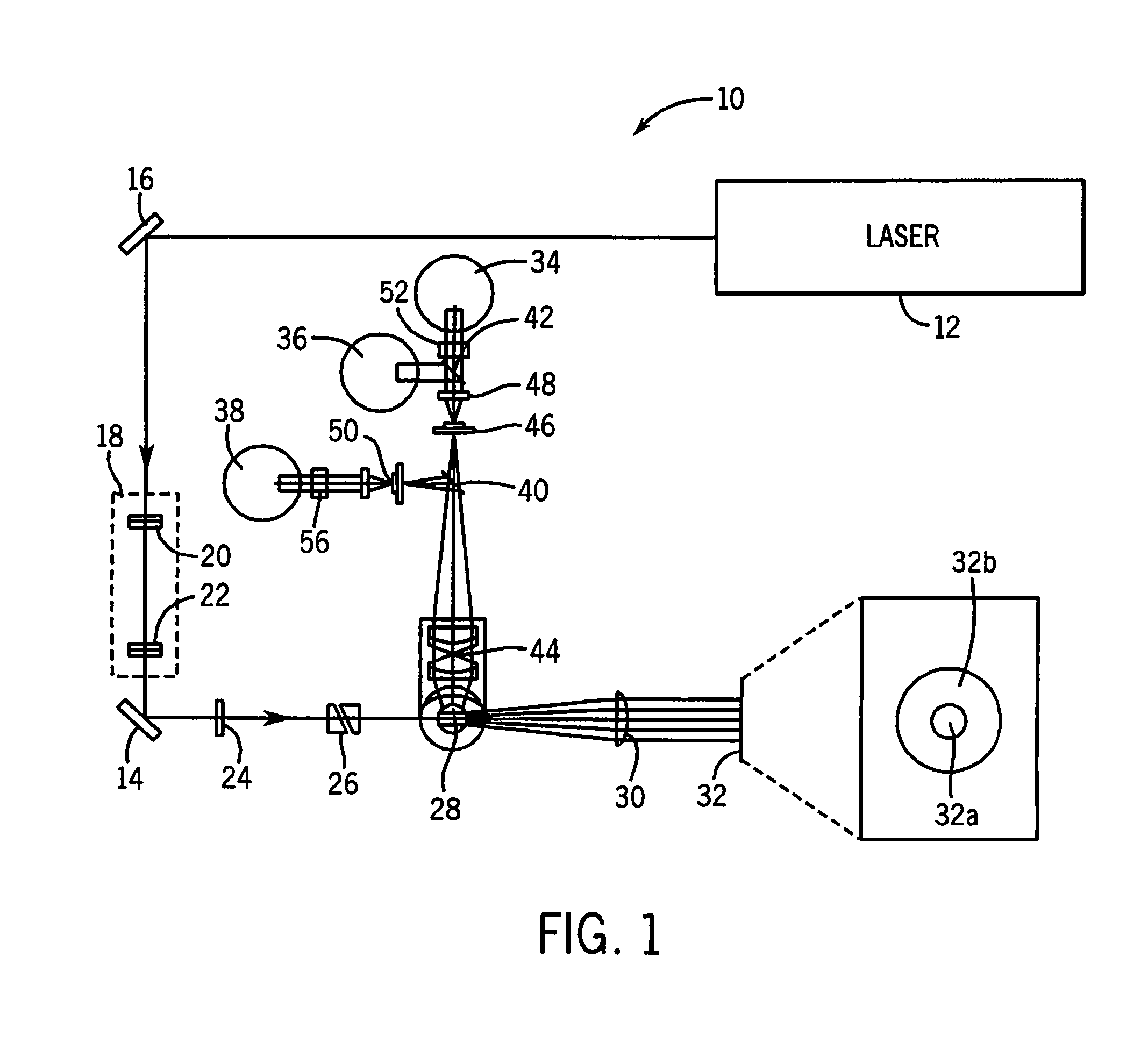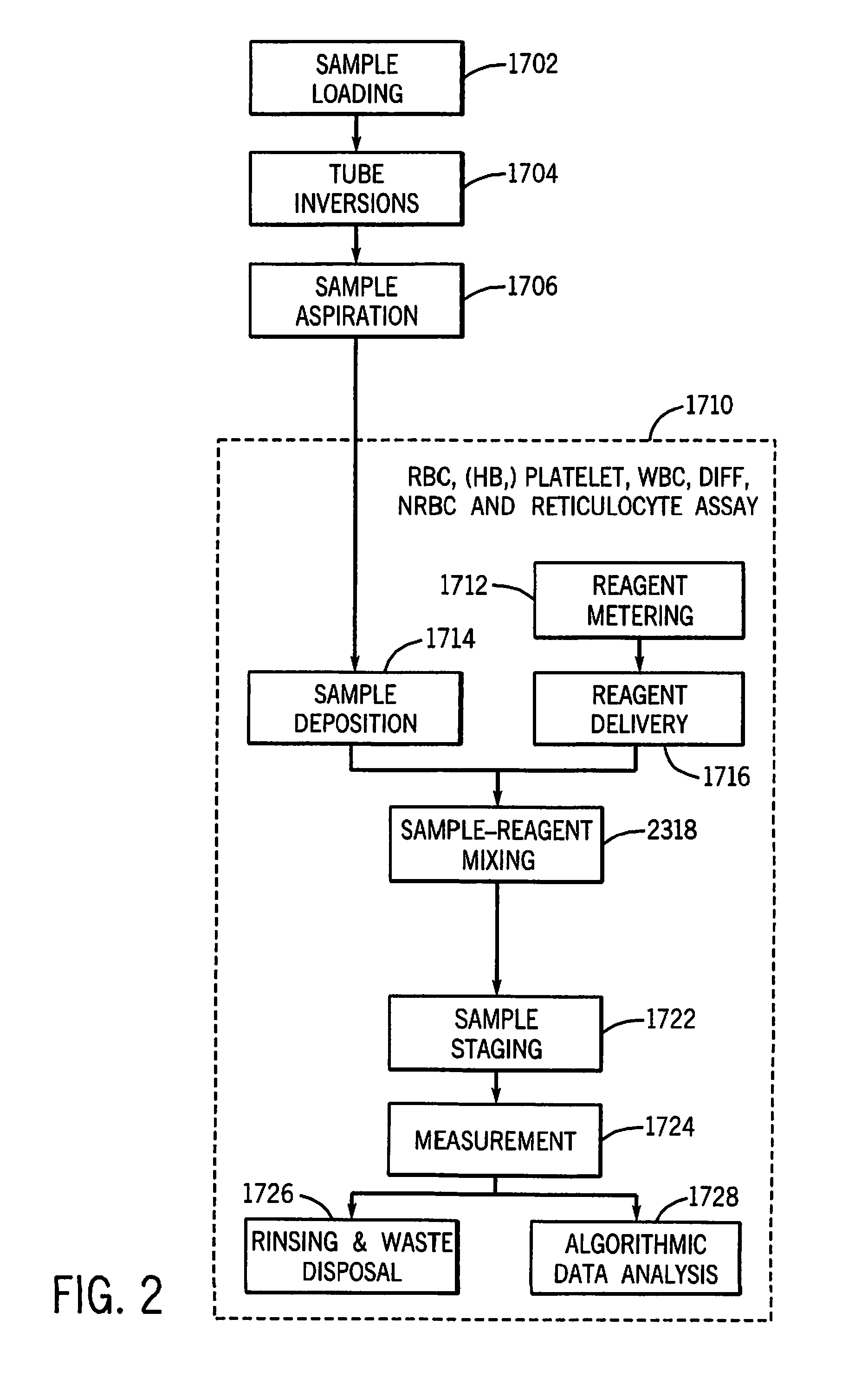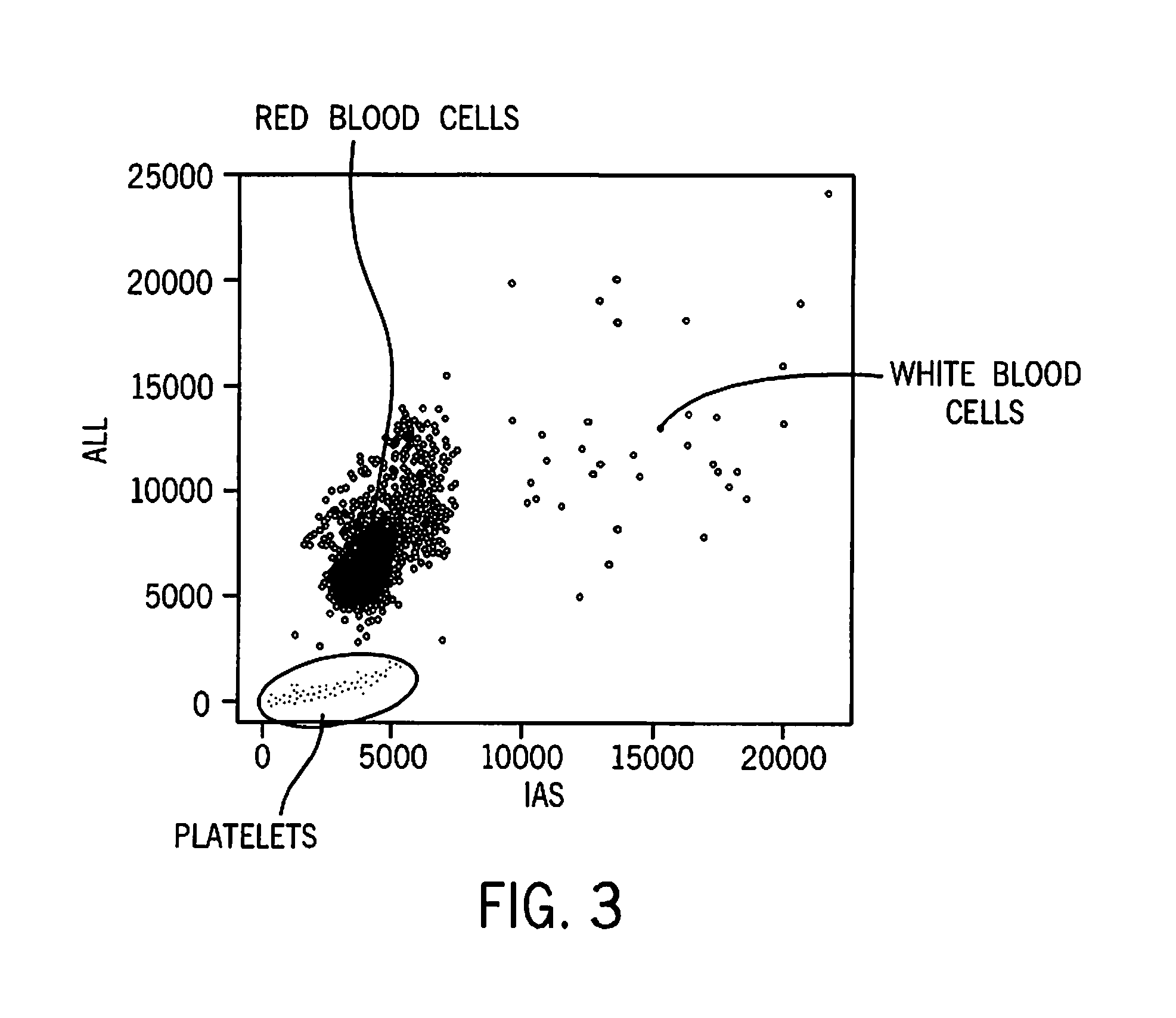Method for discriminating red blood cells from white blood cells by using forward scattering from a laser in an automated hematology analyzer
- Summary
- Abstract
- Description
- Claims
- Application Information
AI Technical Summary
Benefits of technology
Problems solved by technology
Method used
Image
Examples
example 1
[0102]This example illustrates separation of red blood cells, white blood cells, and platelets in a sample of unlysed whole blood carried out on a prototype analyzer that uses a laser having a wavelength of 405 nm. The results are shown in FIG. 3. It can be seen that there is clear separation between platelets, red blood cells, and white blood cells. The number of white blood cells is too low to see a white blood cell differential. In order to collect more white blood cell events, an IAS trigger value corresponding to about 8000 on the IAS is required.
example 2
[0103]This example illustrates a white blood cell differential carried out on a prototype analyzer that uses a laser having a wavelength of 405 nm, wherein the method does not employ a lysing agent. The results are shown in FIG. 4, where monocytes are designated by the letter “M”, lymphocytes are designated by the letter “L”, neutrophils are designated by the letter “N”, and eosinophils are designated by the letter “E.” The classification is achieved without a clustering algorithm.
example 3
[0104]This example illustrates that issues encountered with lysis-resistant red blood cells interfering with the white blood cell count by the CELL-DYN® Ruby® hematology analyzer and the CELL-DYN® Sapphire® hematology analyzer are significantly improved with a laser having a wavelength of 405 nm. CELL-DYN® Ruby® hematology analyzers employ a wavelength of 633 nm. CELL-DYN® Sapphire® hematology analyzers employ a wavelength of 488 nm. The same blood sample was run on three different analyzers using four separate assays; the results are described below, with reference to FIGS. 5-8.
[0105]FIGS. 5A, 5B, 5C, and 5D show that the results generated by the analyzer would indicate that the sample has a lymphocyte percentage of 95%, as measured with a CELL-DYN® Sapphire° hematology analyzer employing a laser having a wavelength outside the range of 400 nm to 450 nm and a lysing agent of low lytic strength. FIGS. 6A, 6B, 6C, and 6D show that the results generated by the analyzer would indicate ...
PUM
| Property | Measurement | Unit |
|---|---|---|
| Angle | aaaaa | aaaaa |
| Angle | aaaaa | aaaaa |
| Angle | aaaaa | aaaaa |
Abstract
Description
Claims
Application Information
 Login to View More
Login to View More - R&D
- Intellectual Property
- Life Sciences
- Materials
- Tech Scout
- Unparalleled Data Quality
- Higher Quality Content
- 60% Fewer Hallucinations
Browse by: Latest US Patents, China's latest patents, Technical Efficacy Thesaurus, Application Domain, Technology Topic, Popular Technical Reports.
© 2025 PatSnap. All rights reserved.Legal|Privacy policy|Modern Slavery Act Transparency Statement|Sitemap|About US| Contact US: help@patsnap.com



